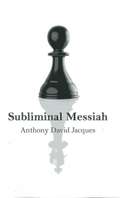- Table View
- List View
لباب الآداب
by أبو منصور عبد الملك بن محمد بن إسماعيل الثعالبيهذا الكتاب القيم، لأبي منصولا الثعالبي يعد من أفضل كتب اللغة وقد جعله في ثلاثة أقسام القسم الأول في اللغة وهو مطبوع منفصلا تحت اسم "فقه اللغة وأسرار العربي"، أما القسمين الأخيرين فهما في هذا الكتاب أولهما يتناول النثر المرسل من لطائف المخاطبات والمكاتبات وهو في عشرة أبواب وثانيهنا في الشعر
لباب الآداب
by أسامة بن منقذيتضمن الكتاب وصيتان احمدهما وصية الاحياء للاحياء والاخرى هى وصية الاموات للاحياء
لا أحد يراني
by جولي مرادتهدف هذه القصة إلى توعية الولد أن السرقة عمل شائن وأنها قد تؤدي به وبأفراد عائلته إلى السجن وأنه لا يحق له التصرف بمقتنيات غيره وبأموالهم.
كليلة ودمنة
by ابن المقفعهي مجموعة قصص رمزية ذات طابع يرتبط بالحكمة والأخلاق يرجح أنها تعود لأصول هندية مكتوب بالسنكسريتية وهي قصة الفيلسوف بيدبا.
كريم واللاعبون الصغار
by كْلاوْديو مارزوللوكتاب حول المثابرة في التعلم ودور الأسرة والأصدقاء في تشجيع الطفل على المحاولة وتكرار المحاولة حتى يتحقق النجاح. فالقصة تبرز كيف أن الطفل "كريم" ليس لديه أي اهتمام بكرة القدم بسبب اعتقاده بأنه لا يملك أي مهارة في لعبها. لكن الجميع يشجعونه على المحاولة. وبالرغم من أنه لا ينجح في البداية ويبدي رغبته القوية في التوقف عن المحاولة, إلا أن والده وأصدقائه يستمرون في حثه على المحاولة. وأخيراً يحصل كريم على فرصة لتسديد ركلة لم يكن واثقاً من أنها ستكون جيدة, لكنها طارت فوق الجميع ودخلت في المرمى مسجلة هدفاً لفريق كريم, مما جعل الجميع يصفق له.
كتاب معاني أبيات الحماسة
by لأبي عبدالله الحسين بن عليّ النمريّبحث يقدمه أبي عبد الله الحسين بن علي النمري عن مخطوط "كتاب معاني ابيات الحماسة"
كتاب خاص الخاص
by أبو منصور عبد الملك بن محمد بن إسماعيل الثعالبيكتاب يقع في سبعة أبواب متقاربة في المادة التي هي الأقوال البليغة، من الآيات والأحاديث والأمثال والأشعار، مختلفة في المنهج الذي هو منهج الثعالبي في فصول متفرقة من كتبه
كتاب جمهرة الأمثال
by أبي هلال العسكريمن أصول كتب الأدب، بما حوى من أمثال عربية أصيلة، وأخبار عن العرب في جاهليتهم وإسلامهم، وبما اشتمل عليه من لغويات وشواهد، وهو أوفى كتب الأمثال شرحاً لها، رتبه مؤلفه على حروف المعجم
كتاب العشق الإلكتروني
by عبدالله علي الأسمريكم كانت رائعة تلك اللحظة التي قررت فيها قبل عقد من الزمن أن أدلف إلى مقهى للإنترنت في قلب مدينة الرياض لأول مرة في حياتي. رأيت عامل المقهى وقد ارتسمت على وجهه ابتسامة عريضة وهو يقودني إلى مربع صغير يحوي طاولة انتصب عليها جهاز حاسوبي ذي شاشة عريضة. بدا المكان معزولا من ثلاث جهات أما الجهة الرابعة والتي يتم من خلالها الدخول فكانت عبارة عن باب صغير ينغلق بمجرد الدخول. بعد أن استويت على المقعد هرع العامل إلى أيقونة المتصفح browser ليطمس منه سجل المستخدم السابق وذلك - على ما يبدو - لكي لا أ لقي نظرة على ما كان يفعله من جاء قبلي. لم تسعفني خبرتي إذ ذاك في تفسر مغزى ذلك التصرف
كتاب التنبيه على أوهام أبي علي في أماليه
by أبو عبيد الله بن عبد العزيز البكريمن نوادر كتب الأدب. ويضم مجموعة تنبيهات التقطها البكري من كتابه: (اللآلي في شرح أمالي أبي علي القالي) وأفردها في كتاب ليقدمه إلى المعتمد ابن عباد
كتاب الاعتبار
by أسامة بن منقذكتاب "الاعتبار" لأسامة بن منقذ هو عبارة عن مذكرات شخصية كتبها ابن منقذ بعد أن تجاوز الثمانين من عمره
كافئي نفسك
by دانيال ستيل جودي صفيركان صباحا هادئا ومشمسا من شهر نوفمبر عندما أبعدت كارول باربر نظرها عن شاشة الكمبيوتر وحد قت إلى حديقة منزلها في بيل - آير. كان منزلا حجريا كبيرا عاشت فيه طوال خمس عشرة سنة. الغرفة الزجاجية المشمسة التي تستعملها بمثابة مكتب تطل على شجيرات الورود التي زرعتها والنافورة والبركة الصغيرة التي تعكس صورة السماء. المشهد هادئ والمنزل صامت. بالكاد تحركت يداها فوق لوحة مفاتيح الكمبيوتر خلال الساعة الأخيرة. الأمر محبط فعلا . فعلى الرغم من مسيرتها الطويلة والناجحة في الأفلام كانت تحاول تأليف كتابها الأول. لقد كتبت العديد من القصص القصيرة على مر السنوات لكنها لم تنشر أبدا أيا منها. لقد حاولت ذات مرة المشاركة في تأليف سيناريو فيلم. طوال فترة زواجها تحدثت هي وزوجها المرحوم شون عن إعداد فيلم سينمائي معا لكنهما لم يحققا أبدا ذلك. كانا مشغولين كثيرا في إنجاز أمور أخرى كل في مجال عمله الأساسي. كان شون منتجا ومخرجا بينما كانت هي ممثلة. لكنها لم تكن مجرد ممثلة عادية. كارول باربر نجمة كبيرة وقد حققت النجومية منذ كانت في الثامنة عشرة. أصبح عمرها الآن خمسين سنة واحتفلت بذكرى ميلادها منذ شهرين. وبمحض إرادتها لم تشارك في أي فيلم سينمائي منذ ثلاث سنوات. ففي عمرها وحتى مع جمالها الذي لا يزال مميزا أصبحت الأدوار الجيدة نادرة.
في حديقة الحيوانات
by جاين لانغفورد - جون بريستقفز ماجد من سرير ه وارتد ى ثيابه على الفور . فاليوم عيد ميلاده . لقد بلغ الثامنة من عمره . ركض إلى الطابق السفلي ودخل المطبخ . بادرته أمه قائلة : «عيد ميلاد سعيد يا ماجد . تناول إفطار ك بسرعة . قد تناول بابا إفطاره ويرغب بأن يبدأ نهاره باكرا كان الأب ينو ي أخذ ماجد واثنين من رفاقه في نزهة إلى حديقة الحيوان لمناسبة عيد ميلاده
في حديقة الحيوانات
by جاين لانغفورد - جون بريستقفز ماجد من سريره وارتد ى ثيابه على الفور . فاليوم عيد ميلاده . لقد بلغ الثامنة من عمره . ركض إلى الطابق السفلي ودخل المطبخ . بادرته أمه قائلة : «عيد ميلاد سعيد يا ماجد . تناول إفطار ك بسرعة . قد تناول بابا إفطار ه ويرغب بأن يبدأ نهاره باكرا
في التعريب والمعرب وهو المعروف بحاشية ابن بري
by عبد الله بن بري بن عبد الجبار المقدسي المصريكتاب عرض فيه ابن بري كتاب "المعرب" لأبي منصور موهوب بن محمد الجواليقي فتعقب أقواله فأورد حواشيه عليها منسوقة على حروف المعجم
فن التحرير العربي ضوابطه وأنماطه
by محمد صالح الشنطييعتبر كتاب "فن التحرير العربي" لمحمد صالح الشنطي هو البداية لكل كاتب اراد تطوير فن الكتابه لديه بطريقة ميسرة وسهلة الفهم









